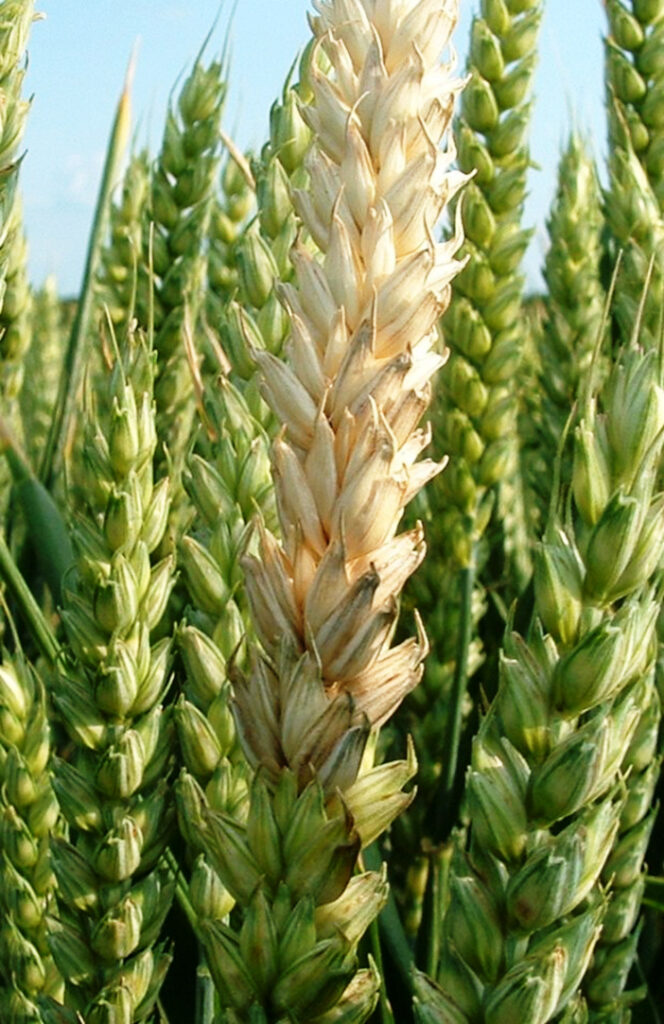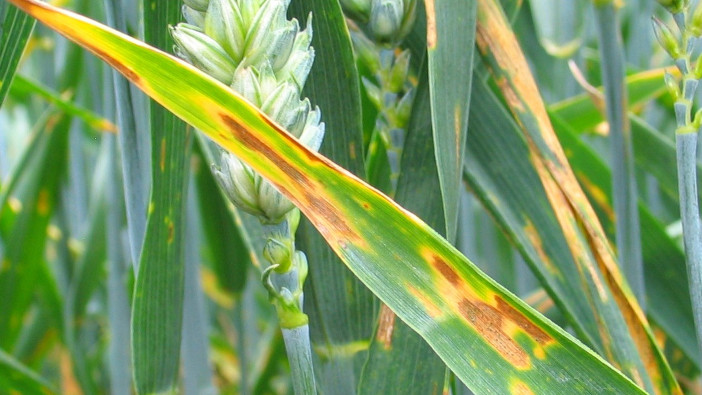Hutchinsons are stating that another cool, dry April might have helped subdue disease pressure in many wheat crops but that the situation could quickly change with a return to more unsettled conditions.
2021 showed how diseases such as septoria can take off when conditions change, so it is vital to not get caught out once what reaches T2 flag-leaf fungicide timing.
“We saw last year, when April was also cool and dry, how those who tried to save a penny at T1, cost them a pound later on as septoria came in as soon as May turned warm and wet. This year, I believe the risk is greater,” said Yorkshire-based agronomist David Stead.
He added that while disease pressure is under control as most crops have received the growth stage 32 fungicide, septoria is present on older lower leaves in more advanced September-sown wheat and yellow rust is proving a challenge in several varieties, notably KWS Zyatt and RGT Skyfall, especially where spray intervals have been stretched due to windy weather or logistical issues of covering large areas.
“It feels like we’re keeping the lid on a bit of a boiling pot at the moment. Disease pressure could explode quite quickly if/when conditions become warmer and wetter. Equally, if May also turns out to be another dry month, then the situation may well lessen.”

Mr Stead noted that it is well worth protecting crops against the uncertainty of what the weather will bring, especially given the excellent yield potential and strong prices.
Protect the flag leaf
While much Septoria may be confined to older leaves, Hutchinsons technical development director Dr David Ellerton warns wet weather could easily cause spores to spread up the canopy and trigger new infections on key yield-building leaves if crops are not fully protected at T2.
“The flag leaf or T2 spray has long been central to fungicide programmes as it protects the top two leaves, which contribute approximately two-thirds of final yield.”
Yield responses vary, but last year he says there was a 3.22 t/ha uplift in the mean treated yield from all fungicides over untreated across five Hutchinsons trials sites. At prices of £300/t, that could be worth close to £1,000/ha.
Treatments should be applied when flag leaves on main tillers are at least 75% to fully emerged (GS 37-39), which usually occurs in mid- to late May, however, decisions must be based on crop growth stage, not calendar date, he advises.
Fungicide options

Dr Ellerton says there is a good range of chemistry available, allowing growers to tailor strategies to the most appropriate product and dose for specific crops and disease pressure, while also benefiting resistance management.
“Generally, mefentrifluconazole (Revysol) offers the strongest curative activity against Septoria and will be the go-to option in many higher-risk situations, such as earlier-sown susceptible varieties like Elation, KWS Barrel, KWS Jackal, KWS Kerrin and RGT Gravity, or where spraying is disrupted due to adverse weather.
“Fenpicoxamid + prothioconazole is also strong on Septoria, with good protectant activity, while twin SDHI products based on bixafen + fluopyram offer a useful combination and may be the strongest option of the older chemistry.”
Including the multisite folpet can extend Septoria protection in high-pressure situations, and help resistance management, but if doing so, he says to use it in addition to the main products, not as a substitute, and resist cutting rates of other products to offset the cost.
For yellow rust, he recommends including triazoles such as tebuconazole or metconazole +/‐ fluxapyroxad. Strobilurins (e.g. fluoxastrobin, azoxystrobin or pyraclostrobin) offer extra persistence and knockdown, while the strongest SDHI on rusts is benzovindiflupyr, although this tends to feature more at T1.
PANEL T3 top-up
While there is little scope to recover lost disease control once crops reach ear emergence, the final ear spray can offer a useful “top-up” of foliar protection, alongside its main purpose of protecting grain quality from ear diseases, especially DON mycotoxins produced by Fusarium.
Mr Stead says the weather at flowering, variety characteristics, previous cropping, attitude to risk and end market will all determine the need for a T3 and the most appropriate fungicide options.
Generally, prothioconazole-based products are effective at T3 as the active is strong against both Fusarium and Microdochium species, Dr Ellerton says. Tebuconazole offers additional Fusarium and rust control, while strobilurins, notably fluoxastrobin or azoxystrobin, are good on sooty moulds and rust. Strobilurins can also bring worthwhile physiological benefits to green leaf retention and stress tolerance.
“For crops with high yield potential, it may be worth considering SDHI chemistry at T3, such as products based on benzovindiflupyr or bixafen, especially if the season is likely to be extended with higher disease pressure. However, a maximum of only two SDHI applications are allowed per crop.”
For the most effective control of Fusarium and Microdochium, Dr Ellerton says to apply the T3 as soon as the ears complete emergence and flowering is underway with anthers visible on the middle florets (GS 63-65).


